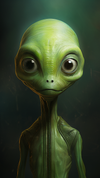From "Flash Gordon" to "Star Wars"
George Lucas's "Star Wars" drew key inspiration from the "Flash Gordon" serials, blending classic space adventure with mythic structure and cinematic influences to create a new sci-fi legend.

Before lightsabers hummed and Death Stars loomed, there was a young boy in Modesto, California. He was glued to the flickering black-and-white images of "Flash Gordon" on television. That boy, George Lucas, would grow up to reshape the landscape of science fiction cinema. The DNA of his galaxy far, far away can be traced directly back to those serialized space adventures of the 1930s.
The "Flash Gordon" serials were pure rocket-fueled spectacle. Cliffhangers, ray guns, exotic planets, and villains with world-conquering ambitions thrilled audiences each week. They were made for Saturday matinee crowds and kept kids coming back. For Lucas, they weren’t just entertainment. They were a template.
In the early 1970s, Lucas attempted to license the rights to "Flash Gordon" from King Features Syndicate. He wanted to remake it. He wanted to bring its visual excitement and epic sweep into the modern era. When negotiations collapsed, Lucas made a fateful decision. He would create his own mythic space saga.
The result was "Star Wars" in 1977. It paid homage to its inspiration while becoming something entirely new. The opening crawl, the swashbuckling energy, the melodramatic score.
All of it echoed the serial format that had once thrilled him. Lucas also drew from other sources. He pulled in ideas from Akira Kurosawa’s "The Hidden Fortress," Joseph Campbell’s work on myth, and the dynamic editing style of 1970s Hollywood.
"Flash Gordon" offered clear-cut archetypes. There was the brave hero, the damsel in distress, and the tyrannical emperor. Lucas gave those bones new flesh. Luke Skywalker borrowed from Flash’s earnest courage. Princess Leia was no passive damsel but a bold leader with grit. Emperor Ming’s villainy laid the groundwork for Darth Vader and Emperor Palpatine.
Where "Flash Gordon" was lean and episodic, "Star Wars" became grand and layered. It created a world with its own laws and legends. Ships looked used. Heroes carried doubt. The Force held everything together like a spiritual glue. It was a future imagined through the lens of old myth and worn machinery.
This shift from tribute to transformation is the real story. Lucas did not just copy what he loved. He expanded on it. He respected the pulp roots of science fiction and elevated them into something mythic. Without "Flash Gordon" there is no "Star Wars." But without Lucas’s ambition, it would have remained another nostalgic imitation.
There is irony in the legacy. "Flash Gordon," once a giant in his own right, is now mostly remembered as the spark that lit a greater fire. Yet this is no diminishment. Science fiction has always thrived by passing the torch. Old dreams make room for new ones.
George Lucas watched a rocket man in tights soar across his childhood screen. And from that vision, he built a universe that still burns bright.

